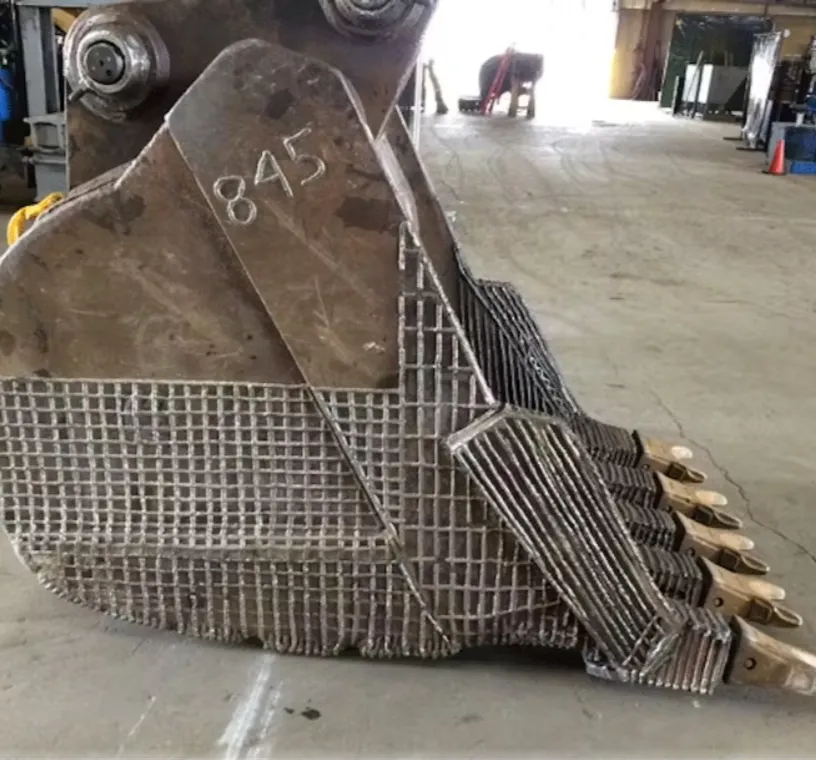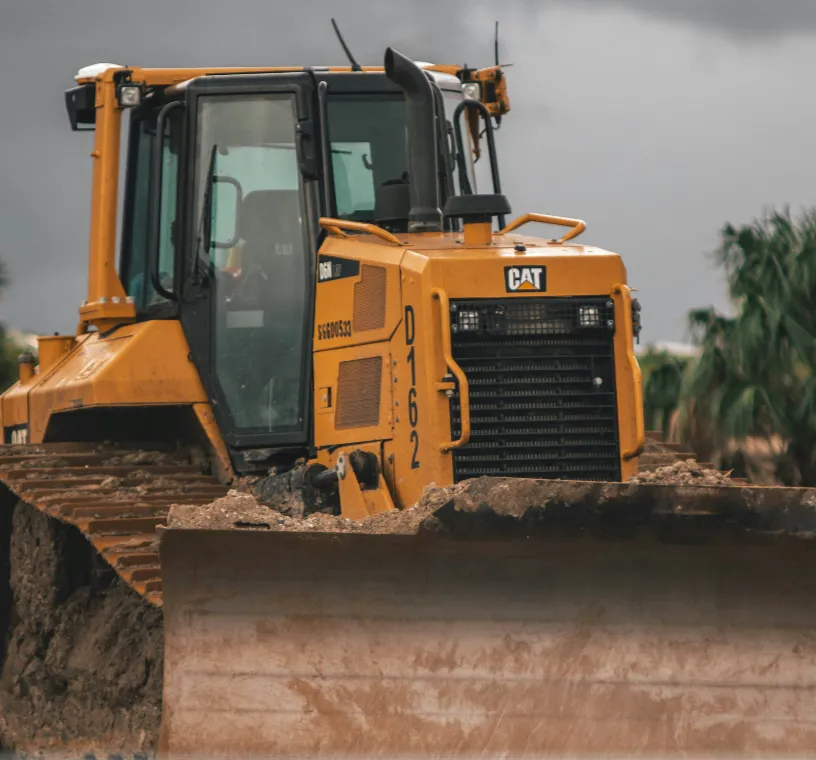Introduction
In the rigorous world of crushing and screening, the efficiency and longevity of machinery play pivotal roles in the success of operations. Optimal performance hinges not just on the machines themselves, but significantly on the quality and reliability of the parts they utilise. Understanding the impact of choosing the right wear parts is crucial in this competitive industry. This comprehensive guide focuses on the substantial advantages of selecting after-market crushing and screening wear parts. While original equipment manufacturer (OEM) parts have traditionally been the go-to choice, a closer look at after-market alternatives reveals a host of benefits that can streamline operations and positively influence financial outcomes.
After-market parts, often overlooked, provide crucial enhancements in lead times, cost efficiency, availability, and quality – each a key factor in the smooth operation and durability of your machinery. This detailed exploration is designed to enlighten those immersed in the demanding environment of crushing and screening, offering insights into how after-market parts can significantly boost operational effectiveness. The aim is to equip professionals with the knowledge to make informed decisions, ensuring their machinery operates at peak performance with minimal downtime.
Whether you are in the thick of a workday or strategizing for future projects, understanding the benefits of after-market wear parts is essential. This guide promises to provide a deeper understanding of how these components can not only sustain but also enhance the functionality and financial viability of your crushing and screening operations.
Lead Time
Lead time in the crushing and screening sector is a critical factor that demands careful consideration. Extended lead times for wear parts can bring operations to a standstill, affecting project timelines and overall productivity. In such a scenario, the advantages of after-market parts become unmistakably clear.
Traditionally, sourcing wear parts, particularly those from OEMs, often involves dealing with international suppliers. While this might seem viable initially, it introduces complexities due to longer shipping durations and the intricacies of international logistics. Consider the typical scenario where an order placed with an overseas supplier incurs not only the expected manufacturing time but also the added delays of sea freight, potentially compounded by customs clearances and other logistical hurdles. This chain of events can extend the time from order placement to part delivery from weeks to months, during which machinery could be idle, accruing significant downtime costs.
The choice of after-market parts, especially those sourced locally, offers a solution that drastically cuts down on these waiting periods. Local suppliers can significantly shorten the gap between order and delivery, ensuring that operations are minimally disrupted. The reduction in lead time is not merely about the quicker receipt of a necessary part; it’s about maintaining the continuity of operations and avoiding the cascading effects of equipment downtime. For businesses, especially those operating within tight schedules and deadlines, the agility provided by after-market parts suppliers is invaluable.
Moreover, local suppliers typically have a deeper understanding of the domestic market’s needs. They often maintain a readily available stock of commonly required parts and can quickly manufacture or procure parts that aren’t immediately on hand. This ability to rapidly respond to part requests—often achieving turnaround times as quick as two business days for previously manufactured parts—contrasts sharply with the longer lead times characteristic of OEM parts sourced internationally.
Beyond the logistical advantages, the shortened lead times of after-market parts have broader business implications. Quicker repairs and replacements mean less time spent on logistical coordination and more time dedicated to productive work. The domino effect of this efficiency can be significant, enabling businesses to complete more projects in a shorter span, thus enhancing their competitive edge and capacity for growth.
In essence, the lead time advantage offered by after-market parts is multifaceted, impacting not just the immediate availability of necessary components but also the broader operational and financial health of a business. In an industry where time equates to productivity and profit, the strategic choice of sourcing after-market parts can be a decisive factor in maintaining continuous, efficient, and profitable operations.
Cost Efficiency
Cost efficiency is a paramount concern in the crushing and screening industry, where every investment significantly impacts the overall financial health of an operation. In this context, the decision to opt for after-market wear parts over OEM alternatives presents not just a viable option, but often, a more financially astute choice.
The initial lure of OEM parts frequently revolves around their perceived quality and compatibility. However, this is often accompanied by higher price tags, influenced by brand premiums and the costs associated with proprietary designs. After-market parts offer a more cost-effective solution without compromising on quality and performance. The pricing of after-market parts is often more competitive compared to OEM parts. This affordability is not indicative of inferior quality; rather, it reflects the more competitive marketplace and reduced overheads typical of after-market suppliers.
Many after-market manufacturers produce parts that meet or surpass OEM standards, offering comparable or even superior performance at a lower cost. This cost-benefit is especially pronounced in the case of parts that are compatible with multiple equipment models or brands, offering versatile solutions that negate the need for a broader, more expensive inventory.
In summary, the cost efficiency of opting for after-market crushing and screening wear parts encompasses both direct and indirect financial benefits. By choosing these parts, businesses can not only enjoy immediate savings on purchase and shipping costs but also leverage the advantages of ongoing operational efficiency. This strategic decision thus supports both the immediate financial needs and the long-term economic sustainability of crushing and screening operations.
Quality and Workmanship
The quality and workmanship of wear parts are not just additional benefits but essential requirements. Superior quality parts ensure longer lifespans, better performance, and, ultimately, a more reliable operation. After-market parts have increasingly become synonymous with high-quality alternatives to OEM parts, offering exceptional craftsmanship that often matches or exceeds the standards set by original manufacturers.
The excellence in quality begins with the materials used. At Lemaro Engineering, we understand the rigorous conditions under which crushing and screening equipment operates. Therefore, wemanufacture parts that are specifically engineered for durability, resistance to wear and tear, and compatibility with a wide range of machinery. This meticulous selection process ensures that the parts not only fit perfectly but also perform optimally under harsh operational conditions.
The quality and workmanship of after-market crushing and screening wear parts are key factors in their growing popularity. With materials specifically chosen for durability, expert craftsmanship, stringent quality control measures, and a commitment to innovation, after-market parts offer a reliable, high-quality option for machinery maintenance and repair. These factors collectively ensure that machinery operators can depend on after-market parts to keep their equipment running smoothly and efficiently.
Conclusion
In conclusion, the decision to opt for after-market crushing and screening wear parts offers a multitude of benefits that can substantially enhance the efficiency and cost-effectiveness of operations. This comprehensive analysis has underscored the pivotal advantages of after-market parts: significantly reduced lead times, remarkable cost efficiency, unparalleled availability, and exceptional quality and workmanship.
The strategic choice of after-market parts is not merely a decision about replacing worn components; it is an investment in the ongoing productivity and profitability of your operation. By opting for after-market solutions, businesses can significantly reduce the downtime caused by part unavailability or extended delivery periods, a crucial factor in maintaining continuous operational flow. The cost benefits are equally compelling, offering substantial savings not only in terms of direct purchase prices but also through the reduction of shipping and associated logistical expenses.
The ready availability of a diverse range of after-market parts ensures that businesses can swiftly respond to maintenance needs, keeping machinery in top condition and projects on schedule. The superior quality and workmanship of these parts mean that businesses are not compromising on the reliability and longevity of their machinery. In fact, the continual innovations and stringent quality controls often make after-market parts a superior choice in terms of performance and durability.
As the crushing and screening industry continues to evolve, the reliance on efficient, cost-effective, and high-quality machinery becomes ever more crucial. At Lemaro Engineering, we manufacture after-market wear parts that represent a smart, strategic choice for businesses looking to optimise their operations.




